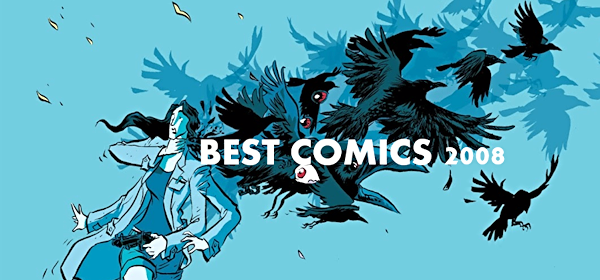“BEST OF 2008: TIM’S TOP 20 COMICS PART II”
Por Tim Callahan
Publicado originalmente en Comic Book Resources dot com el 24 de diciembre de 2008.
– – – – – – – – – –
My big, end-of-the-year listmaking began two weeks ago with the twenty best collected editions of the past twelve months, and last week I gave you the first part of my Top 20 Comics of the Year list, but that was all just the warm up. Today, I’m going to run down the best of the best. The comics that deserve the glory of a coveted Top 10 spot.
These are the ones that matter.
Either that, or they’re just the ones I liked a whole heck of a lot.
As I mentioned last week, I ranked the Best Comics of 2008 “according to aesthetic beauty, narrative elegance, and thematic resonance. In other words, I put the ones I thought were really great at the top of the list, and the ones that I merely liked a lot scored a bit lower.” And, as I described in my previous column, though comics that finished the year poorly probably suffered a bit in the rankings, I tried to consider the year as a whole, and I did my best not to give short shrift to the greatness from the first half of ’08.
And thus, without further ado, here are the comics that reached the exalted status of…
THE 10 BEST COMICS OF 2008
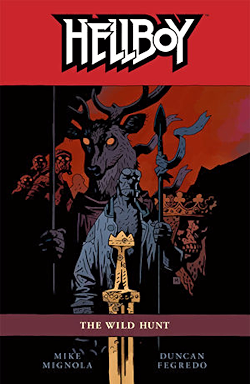
#10: “Hellboy”
There is, of course, no series simply titled “Hellboy.” Instead, Mike Mignola has given us one miniseries after another, and this year’s batch has been excellent. Whether it was Mignola on writing and art chores or Mignola writing with artistic collaborators Richard Corben and Duncan Fegredo, the various “Hellboy” series this year have been some of the best ever. Perhaps my newfound love for the “Hellboy Library” volumes has primed me for other Hellboy comics this year, or perhaps Mignola is hitting his stride as a writer, but whatever the case, this stuff has been really good lately. From the “Darkness Calls” collected edition to the serialized issue of “The Crooked Man,” to the first issue of “Wild Hunt,” Mignola, Corben, and Fegredo have been producing top-notch comics in the past year.
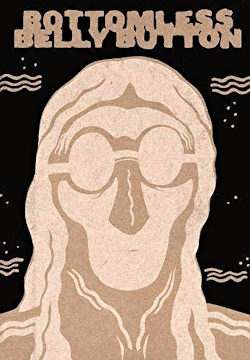
#9: “Bottomless Belly Button”
Dash Shaw’s first major work (and I’m sure it won’t be the last) is an immense book: 720 pages of joy, sadness, despair, hope, and passion. Telling the story of the Looney family, and one fateful summer in which the mom and dad bring their grown children together to a beach house to announce a divorce, Shaw’s deceptively simple linework contains multitudes. “Bottomless Belly Button” reminds me of the cinema of Canadian filmmaker Denys Arcand, specifically “les invasions barbares,” the tale of a dying patriarch and the love and loss felt by his family. Shaw’s work is perhaps less melancholy, but it is no less idiosyncratic, and no less vibrant. Both Arcand and Shaw explore complex human relationships by showing life in all of its variety, and by focusing on small moments of awkwardness, they examine the way we interact with the world around us. Shaw is an ambitious young cartoonist, and this book hints at more greatness to come.
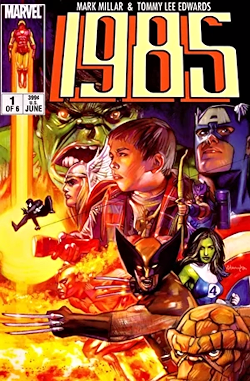
#8: “Marvel 1985”
Mark Millar has slipped into an even more blatant “high concept” phase to his career in recent years (which is saying something, since his first comic work was “Saviour,” a series about Jesus Christ as a superhero in 1980s Great Britain), but the best of the recent batch is this Marvel six-issue series which is basically a Steven Spielberg film disguised as a superhero comic. Originally conceived as a project which would use state-of-the-art photography, “Marvel 1985” was long-delayed until the photography concept was scrapped and Tommy Lee Edwards came in to draw and color it. What a brilliant choice that was! Edwards has done some nice work before, but “Marvel 1985” is exceptional, giving new life to some of Marvel’s musty characters. The basic conceit of this series, that the Marvel villains have entered into the “real world,” is only as interesting as its execution, and by focusing on the human perspective toward these incredibly powerful (and strange) beings, Millar and Edwards make the characters seem fresh and exciting. This is the spiritual sequel to Kurt Busiek and Alex Ross’s “Marvels,” not that limp “Eye of the Camera” nonsense.
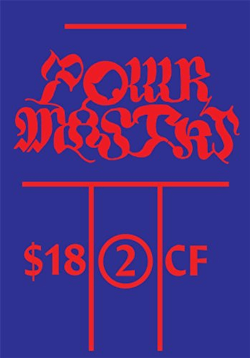
#7: “Powr Mastrs [Vol. 2]”
Of all the PictureBox releases, this might be the most accessible, and perhaps that’s why I like it. Michel Gondry’s comic was insubstantial, the great-looking Gary Panter art book doesn’t qualify, and I haven’t received my copy of the new “Kramers Ergot” yet (and while “Kramers” isn’t a PictureBox release, there’s an aesthetic in common). But with Volume 2 of “Powr Mastrs,” cartoonist C. F. brings the PictureBox aesthetic to the masses. Or the masses who like bizarre Tolkeinesque fantasy scenarios mixed with oodles of absurdity and artistic primitivism. On first glance, C. F. style seems loose, unformed, amateurish, but he plays with form and figures in a beautiful way, giving vivid life to his peculiar cast. “Powr Mastrs” establishes a realm, introduces characters, sets up conflict, but doesn’t provide a simple A to B plotline, although it hints that one might be developing. As such, it creates its own narrative pattern, and establishes a haunting presence in the reader’s mind. It’s one of the few comics from 2008 that I’ve read multiple times, and each time I become more and more in sync with C. F.’s strange and wonderfully offbeat world.
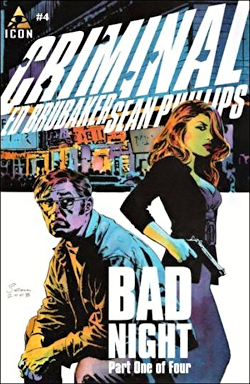
#6: “Criminal”
Ed Brubaker and Sean Phillips have never done anything, independently or together, as good as “Criminal.” I like “Sleeper,” and I would have ranked it above “Criminal” last year, but 2008 was a break-out year for this series, as Volume 2, and particularly the recently-completed “Bad Night” arc, catapulted a really good noir crime comic into one of the best crime comics ever. “Criminal” also works really well as a serialized comic, taking advantage of its format to tell one-shot stories giving multiple perspectives on similar events (issues #1-3 from earlier in the year), and using the multi-part story arc to powerful effect (in issues #4-7 which comprise “Bad Night”). Plus, each issue gives us at least one essay on crime fiction or crime cinema by some of the coolest writers in town. Really, though, it’s the harsh and rugged world Brubaker and Phillips put on display that makes this comic work so well, and when it’s at its best, as it has been this year, “Criminal” takes the noir tropes and turns them into jagged shards of glass, plunged into your mind. And who wouldn’t want to read something like that?
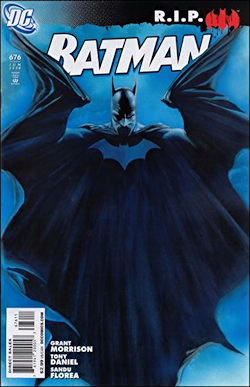
#5: “Batman”
“Batman R.I.P.” may have ended with a bit of a fizzle, at least for those who believed the hype, but throughout the year, Grant Morrison’s “Batman” was the comic I was most eager to read. From the allusions to forgotten comics of the 1950s, through the mysteries of the Black Glove, and the lunatic anarchy of the Joker, I loved what Morrison was doing, and I poured over each issue, often providing annotations on my blog, not because I thought this series would unlock some essential mystery of the universe, but because it was fun. It was engaging. It took Batman and turned him into a homeless guy wearing a purple and red costume while Bat-Mite hovered over his head. It tore down the Batman mythos and rebuilt them in new ways, and it played with the Batman/Joker dynamic as well as any comic ever had before. We still don’t know exactly who Dr. Hurt really was—perhaps the literal Devil, perhaps a metaphorical one—but we do know one thing: “Batman and Robin will never die,” even if they are strapped to the most insane thrill ride of the year, and taken for a brutally fun spin.
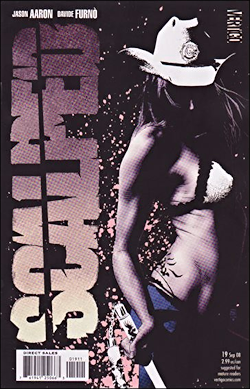
#4: “Scalped”
Had you sat me down, looked me in the eyes, and told me, years ago, that a comic set on a Native American Reservation would be my favorite monthly series of 2008, I would have said, “huh, who are you and why are you so creepy?” And I also would have thought, “nah, that doesn’t sound like it’s a comic for me.” But Jason Aaron and R. M. Guera (mostly, although the other artists have been wonderful as well) have crafted the best Vertigo comic of the year. Hell, it’s the best ongoing series of the year. I would say that it’s an even better crime comic than “Criminal,” but it has become something so much greater than a mere crime comic. “Scalped” is about the lives of people in a pressure-cooker of a situation. They are bound together, their destinies intertwined, and Dash Bad Horse and Chief Red Crow have become two of the most fascinating characters in all of comics, and neither of them say all that much really. Jason Aaron’s genius is in his vivid characterizations using a kind of minimalist language, and it’s alternately brutal and heart-rending. This comic has heft, it has weight, it has substance, and it’s also a pretty badass twenty-two pages every single month.
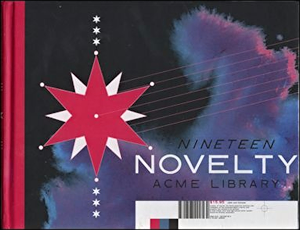
#3: “Acme Novelty Library”
Chris Ware is the greatest working cartoonist. It’s as simple as that. He could have stopped producing work after “Jimmy Corrigan” and he still would be regarded as one of the greatest graphic novelists who ever lived. But Ware continues to refine his craft, and bring his unique brand of comic book miniaturism to the public in the now-annual tradition of “Acme Novelty Library.” Volume 19 is one of his best yet, giving us a book that half sci-fi spectacular and half “Rusty Brown” saga. Actually, it’s all “Rusty Brown” saga, it turns out, as the sci-fi spectacular (which is not the kind of spectacle you’d normally expect from sci-fi, but is exactly what you’d expect from Chris Ware) is really a comic book adaptation of a prose work written by Woody Brown. And the sci-fi tale, which relates the painful and did-I-mention-painful tale of four astronauts in a colony on Mars, not only tells a beautifully sad (with Ware, we expect no less) story, but resonates within the larger thematic structure of the “Rusty Brown” narrative. Ware is a master of this kind of thing, nesting and folding his patterns back upon themselves to create artful little narrative boxes that unfold into something meaningful. And his is a tremendously singular art—nobody else produces comics that look anything like Chris Ware’s. “Acme Novelty Library” is something special.
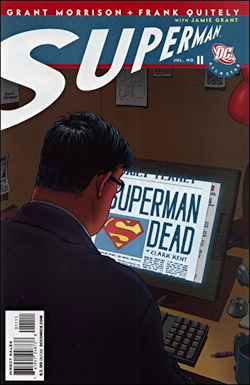
#2: “All-Star Superman”
I don’t know how many issues of this series actually came out in 2008—three? four at most?—but the important thing was that the final issue came out this year, and that was cause to look back on the series and reflect on Grant Morrison and Frank Quitely’s achievement. I spent a whole “When Words Collide” column discussing “Morrison’s Perfect Superman,” and I don’t want to retreat that same ground here, but I’ve heard people say that “All-Star Superman” is pretty much the only Superman comic you’ll ever need, and while I don’t agree with that comment, I understand where it comes from. “All-Star Superman” includes all of the greatness of Superman, rolled up in a single, twelve-issue package. But the effect it had on me was to make me enjoy all other Superman stories all the more. Sure, they pale in comparison to the tale Morrison and Quitely told, but by showing the transcendent possibilities within the character, they have given him new life and given me hope for the past, present, and future.
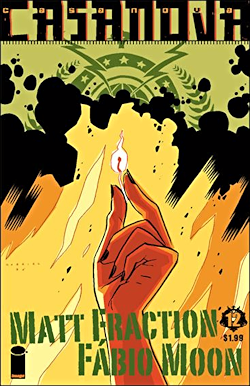
#1: “Casanova”
Matt Fraction and Fabio Moon probably didn’t produce any more issues of “Casanova” in 2008 than we saw issues of “All-Star Superman,” but the second arc of “Casanova,” entitled “Gula,” ended with the greatest single issue of the year. It was such a brilliant issue that it revised the meaning of nearly every other page of the preceding six issues and turned one of my favorite comics of recent years into one of my favorite comics ever. “Casanova,” after only fourteen issues (and no more on the immediate horizon, though Matt Fraction plans to continue the series next year from what I understand) has positioned itself as the comic of the first decade of the 21st century. Its pop sensibility, its embrace of conventions from multiple genres, its exploration of character, and its undeniable sense of fun will no doubt influence a generation of creators. It may not be as easy to superficially replicate the way Warren Ellis’s “Authority” was earlier in this decade, but I have no doubt that “Casanova” will be forever regarded as a seminal work. As I explained in an essay from May of this year, “Casanova” does, indeed, matter.
